There are only two places in the world worth living one is Lahore another is the best place you can be in
I like to see a man proud of the place in which he lives. I like to see a man live so that his place will be proud of him. ~Abraham Lincoln Lahore http://www.ualberta.ca/~rnoor/ Of all the cities in the world, there is something special about Lahore that strikes the heart. It could be that I see it that way because it is the city of my birth but that would do little to explain the way it has fascinated the minds throughout the ages. From pauper to a king or queen, everyone has come under its spell at one time or another. The city has inspired many to sing praises of its glory and even after numerous upheavals and sorrows, it continues to do so. Lahore is mysterious, it is romantic, and some describe it as a “melancholy picture of fallen splendor” but in the words of Empress Noor Jahan, it is Paradise. "I have purchased Lahore with my life. By giving my life for Lahore, I have actually purchased another Paradise." Empress Noor Jahan It is human nature to long for something that is lost. And after moving half a world away, I realized what I have lost. I have lost the chance to do the things I didn’t do, see the places I didn’t see, and meet the people I didn’t meet, for I have lost Lahore. So, in my little way of reclaiming what I lost, I have promised myself to photograph and preserve the images of Lahore. And I have created this site in hopes that others who, like myself, are also enchanted by this magical city or even those who have yet to come under its spell can take some benefit. The photo gallery, though it includes some of my other adventures, is mainly to showcase the images I have captured of Lahore. I have also included a brief introduction to the city and its history as well as descriptions of some sites of interest. I will continue to add to this and build a comprehensive list of historical and important places in Lahore, as I have yet to come across a website that provides an up-to-date listing of all the important sites in Lahore. There are some excellent websites out there about the city of Lahore which, although very extensive and descriptive, unfortunately appear to have copied much of the information from a book written in the 19th century during the time of British rule. This makes it very difficult to weed out what has survived to be seen and what has succumbed to the ravages of time or become the loot of conquerors. |
Lahore History Lahore is the second largest city in Pakistan with a population of roughly 8.5 million. The traditional capital of Punjab for a thousand years, had been the cultural center of Northern India extending from Peshawar to New Delhi. This preeminent position it holds in Pakistan as well. The people of Lahore, when they want to emphasize the uniqueness of their town say "Lahore is Lahore". Lahore is the city of poets, artists and the center of film industry. It has the largest number of educational institutions in the country and some of the finest gardens in the continent. Apart from being the cultural and academic centre of the country, Lahore is the showcase for Mughal architecture in Pakistan. For more than 200 years, beginning from about 1524 AD, Lahore was a thriving cultural centre of the great Mughal Empire. Mughal Emperors beautified Lahore, with palaces, gardens and mosques. The original citadel city is situated one mile to the south of the river Ravi, and some 23 miles from the eastern border of the Punjab district. The walls of the city, when they were still standing, gave it a shape of a parallelogram. The total area inside the walls encompassed roughly 461 acres of land. The city is slightly elevated above the plain, and has a high ridge within it, running east and west on its northern side. The whole of this elevated ground is composed of the accumulated debris of many centuries. The origins of Lahore are shrouded in the mists of antiquity but Lahore is undoubtedly ancient. Legend has it that it was founded about 4,000 years ago by Loh, son of Rama, the hero of the Hindu epic, the Ramayana. Reminiscence of its hoary past are the remains of a subterranean temple attributed to Rama, in the northern part of the Royal Fort. Historically, it has been proved that Lahore is at least 2,000 years old. Hieun-tasng, the famous Chinese pilgrim has given a vivid description of Lahore which he visited in the early parts of the 7th century AD. Lying on the main trade and invasion routes to South Asia, Lahore has been ruled and plundered by a number of dynasties and hordes. Muslim rule began here when Qutub-ud-Din Aibak was crowned in Lahore in 1206 and thus became the first Muslim Sultan of the subcontinent. It waxed and waned in importance during the Sultanate. However, it touched the zenith of its glory during the Mughal rule from 1524 to 1752. The Mughals, who were famous as builders, gave Lahore some of its finest architectural monuments, many of which are extinct today. It was Akbar's capital for 14 years from 1584 to 1598. He built the massive Lahore Fort on the foundations of a previous fort and enclosed t he city within a red brick wall boasting 12 gates. Jahangir and Shah Jahan (who was born in Lahore) extended the fort, built palaces and tombs, and laid out gardens. Jahangir loved the city and he and his wife Noor Jahan are buried at Shahdara. The last of the great Mughals, Aurangzeb (1658-1707), gave Lahore its most famous monument, the great Badshahi Masjid (Royal Mosque) and the Alamgiri gateway to the fort. During the eighteenth century, as Mughal power dwindled, there were constant invasions by the likes of Nadir Shah and Ahmed Shah Abdali. Lahore was a suba, a province of the Empire, governed by provincial rulers with their own court. These governors managed as best they could though for much of the time it must have been a rather thankless task to even attempt. The 1740s were years of chaos and between 1745 and 1756 there were nine changes of governors. Invasions and chaos in local government allowed bands of warring Sikhs to gain control in some areas. Lahore ended up being ruled by a triumvirate of Sikhs of dubious distinction for about 30 years before Maharaja Ranjit Singh came to power in 1799 and finally managed to bring order for 40 odd years. He tried to bring back a glimmer of Mughal glory by renovating some of the monuments while adding some of his own. Because of scarcity of building material, marble and semi-precious stones were appropriated from the existing buildings to be used in the Sikh projects all over the empire. In general however, the Sikh period was bad news for the protection of ancient buildings. Some survived, misused and knocked about a bit and a few new ones were added. Nevertheless, descriptions of Lahore during the early 19th century refer to it as a "melancholy picture of fallen splendor." The British, following their invasion of Lahore in 1849, added many buildings in "Mughal-Gothic" style as well as some shady bungalows and gardens. Early on, the British tended to build workaday structures in sites like the Fort, though later they did start to make an effort to preserve some ancient buildings. The Lahore Cantonment, the British residential district of wide, tree-lined streets and white bungalows set in large, shaded gardens, is the prettiest cantonment in Pakistan. Since Independence in 1947, Lahore has expanded rapidly as the capital of Pakistani Punjab. Today, Lahore can be best described as a city that is just so wonderful, so very fabulous, that every nook and corner of the city speaks of a certain vibrance, a certain zeal, a spirit of life, which cannot be found anywhere else in the world. Perhaps it is the maturity of the city, which manifests itself in the various parts of Lahore. It is present in the monuments, in the bazaars, in the old buildings lining the Mall, or in the vast expanses of the sports grounds in the Cantonment. But most vividly, this great Lahori spirit is visible in the people of Lahore, the Zinda dilan-e-Lahore (The Zealous of Lahore). Lahore is a city of culture, of history, of an unrivaled charm that sets it apart from every other city on earth. It seems that great Lahori spirit has invaded and saturated this city over the centuries, to the effect that Lahore today is not just a city, not just a place in one corner of this planet, but a whole universe in itself; what to say of similarities to other Mughal cities.. .the average Lahori is that same old Mughal prince of bygone ages, one only has to get to know him. There is an old saying, that in every Lahori, there is a Mughal prince. The description of the pure Lahori spirit conveniently evades the mind, adding to the mysteries of this city. At best, it can be said that this spirit pervades the citadel and the slum alike. The city has known ages of cultural, intellectual, musical, literary and humanistic evolution, which has consequently led to the fermentation and over fermentation of this rich brew we call Lahore. Few cities of the world, if indeed any, can lay claim to such a wonderful past or present. All this makes Lahore a truly rewarding experience. The buildings, the roads, the trees and the gardens, in fact the very air of Lahore is enough to set the mind spinning in admiration. Many a poet has written about this phenomenon one experiences in the environs of Lahore. When the wind whistles through the tall trees, when the twilight floods the beautiful face of the Fort, when the silent canal lights up to herald the end of another chapter in history, the Ravi is absorbed in harmony, mist fills the ancient streets, and the havelis come alive with strains of classical music, the spirit of Lahore pervades even the hardiest of souls.

Copyright: The British Library
Lahore is now Pakistan's second largest city with a population of more than 2.5 million. In the Mughal era it was home to one of the Emperor’s courts. The buildings reflected the social code of the time in which every man knew his place.
From a raised balcony in the Diwan-e-Aam, or Hall of Public Audience, built by Shah Jahan in I63I, the emperors looked down on the common people over whom they ruled when they came to present petitions and to request the settlement of disputes. Wealthier citizens and the nobility were allowed to meet their emperors on a level floor in the Diwan-e-Khas, the Hall of Special Audience-which was also built by Shah Jahan, in I633.
 Lahore has been subject to many different ruling dynasties over the centuries but it came to prominence under the Mughals after Babur defeated the Sultan of Delhi, Ibrahim Shah Lodi, at Panipat in 1526. As Emperor Akbar's capital city from 1584 to 1598, came the construction of some of the finest monuments in the Mughal Empire. Akbar built the massive Lahore Fort on the foundations of a previous fort and enclosed the city within a red brick wall boasting 12 gates. Jahangir and Shah Jahan both extended the fort, built palaces and tombs, and laid out gardens. During the 18th century, as Mughal power dwindled, there were constant invasions until the Sikh ruler, Ranjit Singh, invaded and took the city in 1799 and became Emperor. Since Independence from the British in 1947, Lahore has expanded rapidly as the capital of Pakistani Punjab. It is the second-largest city in the country and an important industrial center.  Chauburji, Lahore. Photograph of the Chauburji Gateway at Lahore, Pakistan, taken by an unknown photographer in the 1880s,
part of the Bellew Collection of Architectural Views. Lahore, the capital of Punjab province, is considered the cultural centre of Pakistan.
Islam came here after the advent of Mahmud of Ghazni in 1021 AD, and it was subsequently ruled by a succession of dynasties of the Delhi Sultanate,
followed by the Mughals, the Sikhs and the British. It reached its apogee under the Mughals,
known as the Garden City and with enough architecture to rank it with other great Mughal centres like Delhi, Agra and Fatehpur Sikri.
The Gateway of the Four Minarets or Chauburji was once the entrance to one of Lahore's many pleasure gardens.
The garden, together with one of the gate's corner minarets (on the north-west) is now lost.
An inscription on the gateway records that the garden was established here in 1646, in the reign of Shahjahan,
by a lady described as Sahib-e-Zebinda Begum-e-Dauran, or 'the elegant lady of the age'. The lady referred to is probably Jahan Ara Begum, t
he eldest and favourite daughter of Shahjahan, who was known to have built gardens at Lahore. The gateway is beautifully decorated with rich mosaic-work.
This gateway, known as Chauburji because of its four lofty corner towers (chau=4 and burji=tower) dominates the surrounding landscape.
Travelling south from the centre of the city, you will find it located at the centre of a roundabout formed at the junction of Multan Road and Bahawalpur Road (formerly Lake Road),
and it is visible from some distance due to the large open ground in its vicinity.
The uppermost part of the building has a passage from the Holy Quran inscribed on it in Arabic letters of blue colour worked in
porcelain and the kashi kari inscription at the top of the lofty aiwan gateway dates it to 1056 AH/1646 AD and attributes it to
'Sahib-e-Zebinda Begam-e-Dawran' (the one endowed with elegance, the lady of the age), who had bestowed the edifice upon Mian Bai.
Although Latif credits Zeb-un-Nisa Begam, daughter of Emperor Aurangzeb, with the construction of this structure, equating Zabinda with Zeb-un-Nisa,
archaeologist Waliullah points out that Zeb-un-Nisa would have been only eight years old at the time, and that the builder of the monument is
more likely to have been Jahan Ara Begam, aunt of Zeb-un-Nisa and daughter of Emperor Shah Jahan. If any one could claim to be 'the lady of the age',
it would be Jahan Ara, the Begam Sahib or first lady of the empire. Waliullah reinforces his contention by pointing out the existence of Jahan Ara's garden,
referred to by Aurangzeb in his letters addressed to her. According to the inscription, the garden, of which only the gateway Chauburji is now extant,
was gifted to a Mian Bai. However, since the chronicles are silent about the identity of Mian Bai, Latif conjectures that she was a maid. On the other hand,
Waliullah may be correct in his contention, that in the inscription 'Mian Bai' followed by 'Fakhrunnisa' or 'the pride of women' in the text, indicates 'a lady of status'.
With handsome proportions, the gateway was once "brilliantly enamelled and decorated with blue and green encaustic tiles and fresco of exquisite beauty." The extant kashi kari (tile

-------------------------------------------------------------
Garhi Shahu
The area of Garhi Shahu in Lahore has many a fond memories for me because
I spent my childhood running around in its small streets.
This post is a blog version of that article, adapted to a blog format and with some updates by me.
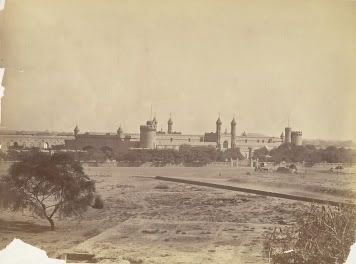
Lahore, definitely has a rich historical past and when talking about Garhi Shahu,
one cannot forget but mention the railway station, or the Christian community,
or the Burt Institute or that wonderful dance club (Nautch Ghar) that no longer functions.
Then there are also the Convent of Jesus and Mary, the Jamia Naimia Mosque, and the Taj and Crown cinemas but surely there is
much more to this place than we have ever cared to explore.
Garhi Shahu reached its pinnacle of fame during the British period with the laying of the railway track.
At the time, being an engine driver was the ‘in thing’.
Initially, all the engine drivers were British for whose accommodation, the Raj laid out beautiful residential colonies near the rail track.
Many of the spacious colonies still exist as reminders of favors bestowed upon its employees by the Raj. There is the still superb Mayo Gardens, the Burt, and also other colonies on both sides of the old Mayo Road,
now renamed after Allama Iqbal. Another part of our history lost to the nationalistic fervor of renaming roads and localities.
As the railways grew, the British then started hiring Indian Christians,
mostly of Portuguese origin from Goa and soon Lahore became filled with D’Souzas,
D’Sylvas and Ferrairas, alongside the fairer skinned British origin names like Burtons, Brians, and Nibletts.
The new recruits were also inducted into the railway police, and later on into the Punjab police, where they all served this city with distinction.
During that time, the social and cultural environment of Garhi Shahu was markedly different from the rest of Lahore,
making it a much sought after area. Today, you will be hard pressed to find any of these names here,
as almost all of them have for valid reasons “flown to cooler climes�.
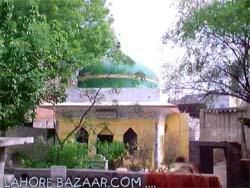
But then the real story of the area must begin a long time before the Raj during the days of Emperor Shah Jehan,
for during his reign an Arab sage by the name of Abul Khair came to Lahore on his travels from Baghdad. In those days, the area now known as Garhi Shahu was known as Mohallah Syedan,
because in this area lived scholars like Syed Jan Muhammad Hazuri, after whom is named the famous Hazuri Bagh.
Abul Khair was a well-known scholar of Islamic jurisprudence and upon reaching Lahore
, found the intellectual environment of Garhi Shahu much to his liking and decided to settle down here.
During the reign of Aurangzeb, the fame of Abul Khair spread far and wide.
The emperor ordered that a madressah be built for Abul Khair and a suitable residence be arranged for the scholar.
A firmaan or a Royal Order was also issued instituting a maintenance allowance
for the upkeep of the house and the madressah and so Abul Khair’s institution was founded.
For some time after that, the area was also known as Khairabad. Today, the madressah is but a hoary ghost of its former splendor.
It lies empty and derelict on one edge of a small graveyard at the end of a small lane as the road curves towards the main Garhi Shahu chowk.
Abul Khair taught in his madressah till the age of 105, and on his death he was buried here, as were other well-known persons of that age.
As the Mughal Empire was folding and anarchy was slowly settling in, scholarship and learning were no longer on a premium
.Before Maharaja Ranjit Singh came to power in 1799 and finally managed to bring order for 40 odd years,
Lahore was ruled by a triumvirate of Sikhs of dubious distinction for about 30 years.
During this period, anarchy reigned supreme and the madressah was taken over by a khalifa by the name of Muhammad Naeem,
who taught there but on his death there was a void.
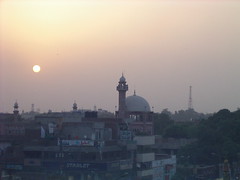
But as we all know, anarchy has rules of its own, and it knows how to fill in voids on its own accord, just like in our times
“qabza groups’ make a mockery of the law, in a way very little has changed.
Abul Khair’s house and madressah had many scoundrels with an eye on it.
As was the fate of many other historical buildings in the area, people started stealing bricks from the buildings of the madressah.
Students of the madressah were constantly harassed by groups of dacoits and stripped of their meager
belongings.
Then came a real godfather by the name of Shahu, and along with his gang of rustlers, he took possession of the buildings
meant to accommodate Abul Khair and his scholars. His gang went on a rampage, stealing cattle and other valuables from
the area which they then hid in the madressah for safekeeping. If the owners demanded their possessions back,
they would return them for a small price otherwise, they would sell their goods.
This was the age when Lehna Singh, Suba Singh, and Gujjar Singh (the three rulers of Lahore) were restricted to their small domains.
In between there was no law. The gang of Shahu ruled supreme, and it was from him that the name Garhi Shahu came. The Sikhs started calling it by this name, so did the British when they arrived, and so do we, and â€Å “there seems no reason why we should change its name just because Mr. Shahu was a shady character and lived a life very much like many a ‘respectableà¢Ã¢â€šÂ¬Ã¢â€žÂ¢ citizen these days, and one does not say this in jest.â€Â?
The British changed the character of Garhi Shahu, for it was the hub of their entire effort to provide their forces
and subjects with a means of communication that revolutionized life in a major way. â€Ã
…“But who would have ever thought that an area that came up to accommodate a most
learned man never kept his name, and a complete scoundrel managed to keep his name alive
because he was a genuine ‘qabza group’ leader.
Strange are the twists of fate that we see in Lahore, for every brick has a story to tell.�
The historical photograph of the Railway Station at Lahore, Pakistan was taken by George Craddock in the 1880s and is part of the Bellew
Collection of Architectural Views.
Raza Noor has a passion for exploring the history of Lahore, which he does on his dedicated Lahore website and also on Metroblogging Lahore.
|





![Railway Station [Lahore].](http://ogimages.bl.uk/images/019/019PHO0000050S2U00007000[SVC2].jpg)

![Shalimar [Gardens], Lahore](http://ogimages.bl.uk/images/019/019PHO000752S15U00021000[SVC2].jpg)


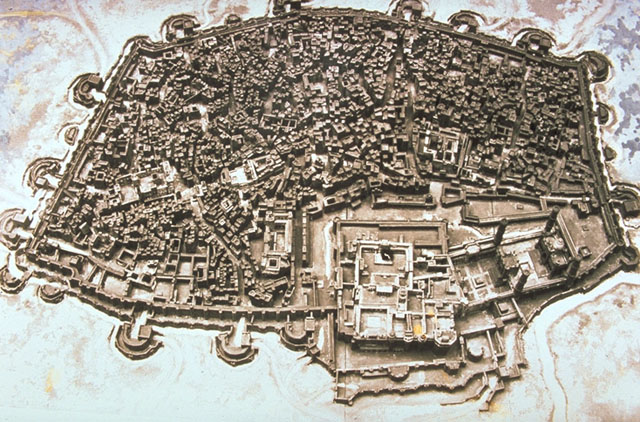





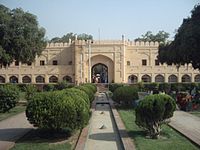

Great information about the history of Lahore and the beautiful places of Lahore which are the main cause of tourist attraction in Pakistan and most of the sites are constructed in the reign of Mughal emperors.If you want to see more historical places in Pakistan and you want to explore your knowledge about the history of Pakistan then you'll must visit to Pakistan and for this you can hire services from flights for pakistan
ReplyDeletePakistan have wonderfull places in the world.Pakistan attracts thousands of tourists every year and most of them come only to visit historical places.And if you want to visit here to see that historical places then you can contact with cheap flights to islamabad and choose further destination to explore pakistan.
ReplyDeleteThis article is an appealing of informative data that is interesting and well-written. I commend your hard work on this and thank you for this information. You’ve got what it takes to get attention.
ReplyDeletearchitects in Pakistan